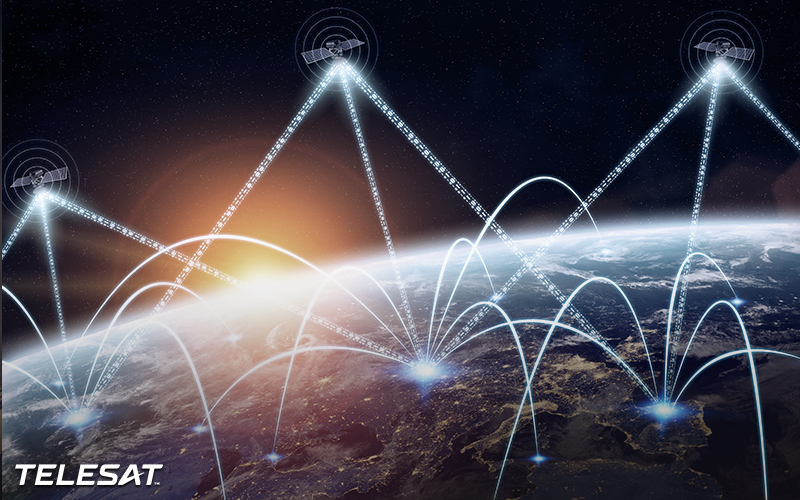Telecom providers, enterprises and government agencies are rapidly going “all in” on Low Earth Orbit (LEO) satellites. This bullishness is diminishing skepticism from naysayers — including some geostationary (GEO) satellite services providers, journalists, and satellite industry analysts — about the profitability of LEO networks. These skeptics routinely question the business economics of LEO constellations, in part due to past failures.
However, thanks to earlier initiatives and technological advances, today’s LEO satellite constellations offer a compelling solution that includes low latency and high performance at reduced costs.
Several companies paved the way for today’s LEO constellations. In the late 1990s for example, Iridium Communications launched 66 satellites at 780 kilometers (km) to provide telephony services to handsets anywhere on Earth. Globalstar Inc. launched 48 satellites at 1,400 km as a competitor. Although both projects were technically successful, the high costs to build and launch the satellites were too steep for the narrowband market demand at that time.
The first broadband LEO design was developed in 1994 by Teledesic, a company led by telecom entrepreneur Craig McCaw and backed by Microsoft’s former CEO and Chairman Bill Gates. Their vision was to provide high-speed global connectivity to businesses, schools, and individuals. However, Teledesic faced a series of hurdles — such as manufacturer cutbacks, a space industry downturn, and the dot-com crash — all of which led to the company’s closure in 2002.
Ultimately, Teledesic was an innovator ahead of its time. It had a constellation design of 840 satellites with advanced phased array antennas, optical intersatellite links and onboard processing. The technologies were still novel in the 1990s, and the high costs to deploy this type of network were not feasible.
Fast-forward to today: there is a surging demand for low-latency broadband connectivity. Consider that when Iridium and Globalstar introduced their narrowband LEO networks in the late 1990s, the Internet wasn’t a must-have technology and the first smartphones weren’t even introduced until 1994. Today, businesses and individuals depend on connectivity, with global data consumption over telecom networks expected to nearly triple between 2022 and 2027, to more than 9 petabytes.
In addition, several technological breakthroughs have made LEO constellations financially viable with the ability to offer improved satellite bandwidth pricing, including:
- Phased array antennas. Design and technical enhancements to antennas on the spacecraft have resulted in better link performance, increased network efficiency, and an enhanced flexibility to focus and dynamically deliver capacity to users. The Telesat Lightspeed network can support multi-Gbps links to user terminals, and aggregate massive amounts of capacity within a demand hot spot like an airport hub or remote community.
- Optical inter-satellite links (OISLs): The use of OISLs creates a mesh network in space, providing improved data routing versus “bent pipe” satellite architectures, which require multiple hops or connections to transmit data from one part of Earth to another. OISLs eliminate these hops, while also reducing the number of landing stations required to deliver global services.
- System management: Artificial intelligence, machine learning, advanced analytics and system orchestration have improved usable capacity and services management.
- Chipsets. Moore’s Law observes that the number of transistors on a chipset doubles every two years. That increase has in turn improved satellites’ onboard processing capacity. Even just 10 years ago, semiconductors generated a great deal of thermal heat and consumed considerable power. Today’s chips have addressed these issues and, when combined with the latest antenna technology, will enable the Telesat Lightspeed constellation to greatly improve payload processing.
- Launch. Innovations in the satellite launch industry, including reusable rockets and rapid launch cadences have dramatically reduced the cost of delivering satellites to space, further improving the capital expenditure investments for LEO constellations.
- Manufacturing: Unlike the typical three-year satellite manufacturing run for a single geostationary satellite, LEO satellites can leverage assembly-line manufacturing, which drives down costs. One satellite per day will be delivered by the Telesat Lightspeed manufacturer.
Technological innovations like these have combined to make LEO satellites not only viable, but also a smart investment. For example, Panasonic Avionics is now making plans to use LEO networks, according to John Wade, Vice President for Connectivity. The company provides in-flight Wi-Fi to approximately 2,500 commercial aircraft, primarily relying on GEO satellites for connectivity. But having seen the powerful performance of LEO satellite communications, it is seeking to expand into Low Earth Orbit satellite projects.
“You get a much better experience on a low-latency, low-bandwidth network,” Wade said in a Space Intel Report. “LEO networks are going to be far more tolerant in terms of passenger experience.”
Telesat Lightspeed, a network of 198 state-of-the-art satellites, will provide high-speed connectivity to multiple industries, including telecom. Its high throughput, low-latency performance will provide the superior experiences that governments and businesses expect.



